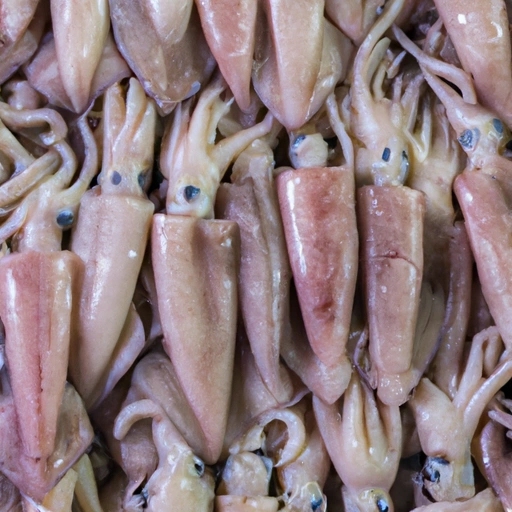Squid
Description

Squid is a popular seafood ingredient known for its mild flavor and firm texture. It belongs to the cephalopod family, which also includes octopus and cuttlefish. Squid can be found in waters all around the world and is utilized in a variety of culinary traditions, from Asian to Mediterranean and American cuisines. Squid is often sold fresh, frozen, or dried, and it can be prepared in numerous ways, making it a diverse component in many dishes.
Common uses
Squid is typically used as a main ingredient in seafood dishes, appetizers, salads, and even pasta sauces. It is also commonly consumed as fried calamari, a beloved dish in many parts of the world.
Nutritional value
Calories
100 grams of raw squid contains approximately 92 kcal (385 kJ).
Protein
Squid is rich in protein, offering about 15.6 grams per 3.5 ounces (100 grams).
Fat
This seafood is low in fat, with roughly 1.38 grams per 100 grams.
Carbohydrates
Squid contains a minimal amount of carbs, with only 3 grams per 100 grams.
Vitamins
It provides a good source of Vitamin B12 and riboflavin (Vitamin B2).
Minerals
Squid is a rich source of minerals such as phosphorus, selenium, and iodine.
Health benefits
Consuming squid can have various health benefits. It is heart-healthy due to its high levels of omega-3 fatty acids. The high protein content supports muscle growth and repair, while the low calorie count makes it suitable for weight management. The presence of essential vitamins and minerals helps maintain various bodily functions, including thyroid health and immune system support.
Potential risks
While squid can be nutritious, it also has the potential to contain heavy metals like mercury, which can pose health risks if consumed in large quantities. Some people may also be allergic to squid and other mollusks. As with any seafood, ensuring freshness and proper preparation is critical to avoid foodborne illness.
Common recipes
Popular recipes featuring squid include Italian calamari fritti, Spanish paella, Greek calamari, and Asian stir-fries or noodle dishes.
Cooking methods
Squid can be grilled, fried, sautéed, boiled, or stewed. It is essential to cook squid for either a very short time at high heat or a prolonged period at low heat to ensure tenderness.
Pairing with other ingredients
Squid pairs well with bright, acidic flavors like lemon and tomato, as well as with herbs such as parsley and oregano. It can also complement spicy and savory profiles found in Asian cuisine.
Summary
Squid is a versatile and nutritious seafood ingredient that enjoys global popularity. With its mild taste and firm texture, it can be prepared in a multitude of ways and offers both health benefits and delicious flavors. However, it is crucial to consume squid in moderation and ensure it is sourced and prepared safely to avoid any potential risks.